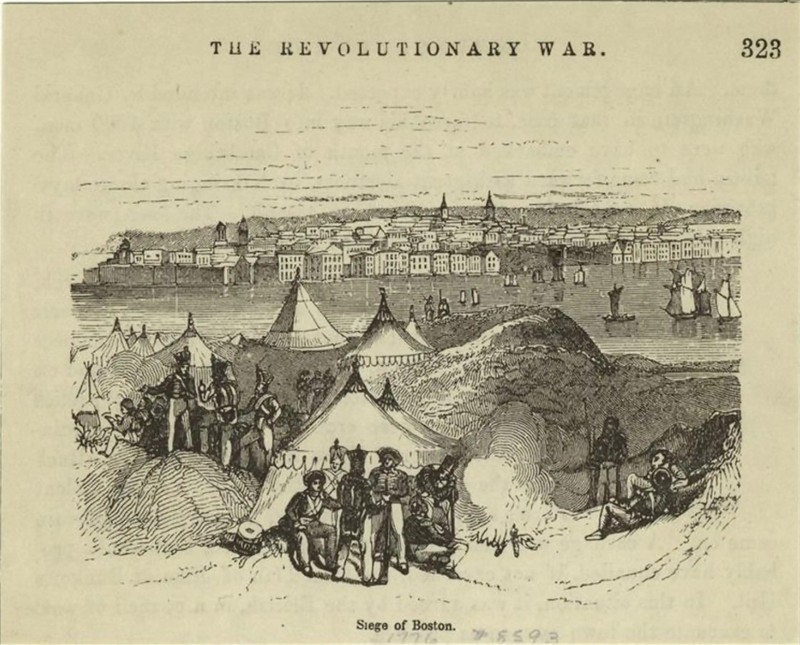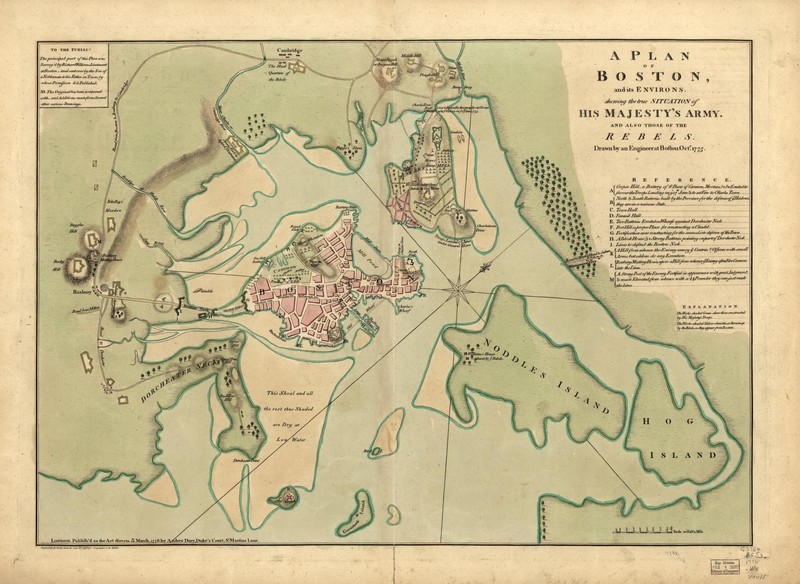Siege of Boston
Introduction
Text-to-speech Audio
19 April 1775 to 17 March 1776
American Victory
Following the Battles of Lexington and Concord, New England militia units surrounded Boston, Massachusetts, trapping 6,000 British troops and thousands of Loyalists. The siege of Boston had begun. On 14 June 1775, the Continental Congress voted to take on the New England Army of Observation as a Continental Army. They sent General George Washington to take command of the militia forces around the city on 3 July 1775. Continental troops blocked the Charlestown Neck, the only land access to Charlestown and Boston. American control of the land route forced the British to resupply their forces by sea. This was not difficult because the rebellious colonies lacked a navy. Col. Henry Knox conducted a hazardous winter mission to bring cannon from Fort Ticonderoga, New York to Boston. Knox provided Washington’s Army with crucial artillery to reinforce Dorchester Heights overlooking Boston harbor in early March 1776. General William Howe realized that his position in Boston was untenable, and withdrew to Halifax, Nova Scotia on 17 March 1776. In their haste to leave the city, the British left behind stores of cannons and ammunition for the American arsenal.
Images
Seige of Boston

"A plan of Boston, and its environs: shewing the true situation of His Majesty's army, and also those of the rebels"

Backstory and Context
Author-Uploaded Audio
Listen to a narration of this entry's description by Kenna Felix.
Text-to-speech Audio
The creation of a truly American Army on 14 June 1775 was highly significant to the history of our emerging nation. The colonial militias and volunteer Minutemen were invaluable in controlling population and resources in the countryside. Unfortunately, they often melted away as fast as they were raised. In addition, those forces often identified with their own state or region. However, the first ten companies of Continental Army Soldiers were a national force even before the nation was fully formed. The first continentals were recruited from several states and were sent from one end of the thirteen colonies and then states to another. In time a nation would grow out of the seeds planted by each continental Soldier as he signed up not as a "summer Soldier" or "sunshine patriot," to use the immortal words of Thomas Paine, but as an American Soldier in service to his nation whenever and wherever needed.
Sources
Boatner, Mark Mayo, Encyclopedia of the American Revolution, Stackpole Books, 1994.
Ferling, John, Almost a Miracle: The American Victory in the War of Independence, Oxford University Press, 2007.
Ferling, John, Whirlwind: The American Revolution and the War the Won It, Bloomsbury Publishing, 2015.
Middlekauff, Robert, The Glorious Cause: The American Revolution, 1763-1789. Oxford University Press, 2005.
Philbrick, Nathaniel, Valiant Ambition: George Washington, Benedict Arnold, and the Fate of the American Revolution, Penguin Books, 2017.
Savas, Theodore P. & J. David. A Guide to the Battles of the American Revolution, New York: Savas Beatie LLC, 2006.
Stewart, Richard W., ed. American Military History. 2nd ed. Vol. 1. American Historical Series. Washington, D.C.: Center of Military History, United States Army, 2009.
Tucker, Spencer, ed. American Revolution: The Definitive Encyclopedia and the Document Collection (5 volumes), ABC-CLIO Publishing, 2018.
New York Public Library
Library of Congress, Geography and Map Division
